-
 bitcoin
bitcoin $95122.959084 USD
-0.06% -
 ethereum
ethereum $3142.532402 USD
-0.28% -
 tether
tether $0.999439 USD
0.01% -
 xrp
xrp $2.209207 USD
-2.80% -
 bnb
bnb $925.395975 USD
0.07% -
 solana
solana $138.662599 USD
-1.73% -
 usd-coin
usd-coin $0.999753 USD
-0.02% -
 tron
tron $0.294100 USD
0.03% -
 dogecoin
dogecoin $0.161321 USD
0.35% -
 cardano
cardano $0.498672 USD
-1.53% -
 hyperliquid
hyperliquid $38.406659 USD
1.34% -
 zcash
zcash $679.663571 USD
5.44% -
 bitcoin-cash
bitcoin-cash $501.381807 USD
3.53% -
 chainlink
chainlink $13.975571 USD
-0.64% -
 unus-sed-leo
unus-sed-leo $9.166130 USD
-0.37%
What is a DeFi aggregator? How to optimize returns?
DeFi aggregators combine multiple DeFi protocols to maximize returns, automatically finding the best yield opportunities for users' investments.
May 16, 2025 at 01:14 pm
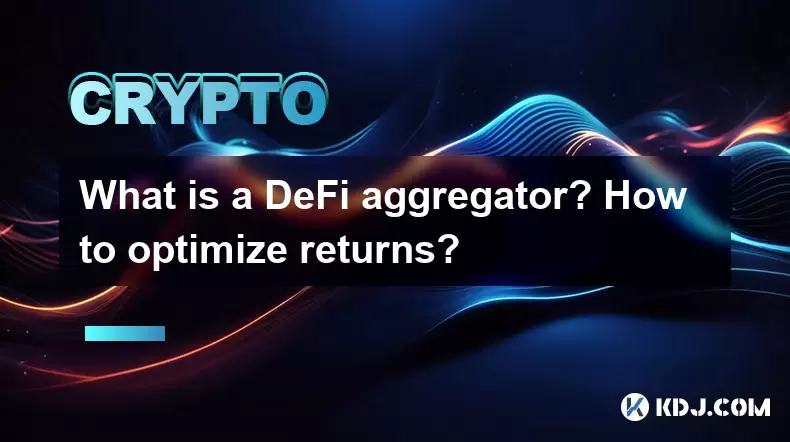
A DeFi aggregator is a platform that combines multiple decentralized finance (DeFi) protocols to provide users with the best possible returns on their investments. These platforms work by automatically searching through various DeFi protocols to find the highest yield opportunities available, thereby simplifying the process for users who might otherwise need to manually compare and switch between different platforms. DeFi aggregators are particularly useful in the ever-changing landscape of DeFi, where new opportunities and risks emerge frequently.
How DeFi Aggregators Work
DeFi aggregators operate by integrating with multiple DeFi protocols, such as lending platforms, decentralized exchanges (DEXs), and yield farming opportunities. When a user deposits funds into a DeFi aggregator, the platform automatically allocates these assets across different protocols to maximize returns. This process involves analyzing current interest rates, liquidity pools, and other yield-generating opportunities to ensure that the user's funds are always working at their highest potential.
To illustrate, consider a user who wants to earn interest on their cryptocurrency holdings. Instead of manually comparing rates on different lending platforms like Aave, Compound, and dYdX, the user can deposit their assets into a DeFi aggregator like Yearn.Finance or Beefy Finance. The aggregator will then distribute these assets across the various platforms to achieve the highest possible yield.
Types of DeFi Aggregators
There are several types of DeFi aggregators, each designed to cater to different aspects of the DeFi ecosystem. Yield aggregators focus on maximizing returns from yield farming and liquidity provision. Examples include Yearn.Finance and Harvest Finance. Lending aggregators like Cream Finance and Alpha Homora aim to optimize returns from lending and borrowing activities. Swap aggregators such as 1inch and Matcha work to find the best exchange rates across multiple DEXs for token swaps.
Each type of aggregator serves a specific purpose, but the overarching goal remains the same: to provide users with the most efficient way to earn returns on their crypto assets without the need for constant monitoring and switching between platforms.
Benefits of Using DeFi Aggregators
One of the primary benefits of using DeFi aggregators is the time and effort saved. Instead of manually researching and comparing different DeFi protocols, users can rely on the aggregator to handle these tasks automatically. This is particularly advantageous for those who may not have the time or expertise to navigate the complex world of DeFi.
Another significant advantage is the potential for higher returns. By dynamically allocating assets to the most profitable opportunities, DeFi aggregators can often achieve higher yields than users might obtain by sticking to a single platform. Additionally, these platforms often include features like auto-compounding, which can further enhance returns by automatically reinvesting earned interest.
Risks and Considerations
While DeFi aggregators offer many benefits, they are not without risks. One of the primary concerns is smart contract risk. Since aggregators interact with multiple DeFi protocols, any vulnerability in one of these underlying contracts could potentially affect the aggregator's performance and user funds. It's essential for users to conduct thorough research and due diligence before choosing an aggregator.
Another risk to consider is impermanent loss, which can occur when providing liquidity to certain DeFi protocols. While some aggregators mitigate this risk by carefully selecting pools with lower volatility, it remains a factor that users should be aware of.
How to Optimize Returns Using DeFi Aggregators
To optimize returns using DeFi aggregators, users should follow a few key strategies. First, it's crucial to select an aggregator that aligns with your investment goals and risk tolerance. For example, if you're primarily interested in yield farming, a platform like Yearn.Finance might be the best choice. If you're more focused on lending and borrowing, consider using a lending aggregator like Cream Finance.
Once you've chosen an aggregator, the next step is to deposit your assets into the platform. Here's a detailed guide on how to do this using Yearn.Finance as an example:
- Visit the Yearn.Finance website and connect your wallet (e.g., MetaMask).
- Navigate to the 'Vaults' section to see the available yield farming opportunities.
- Select a vault that aligns with your investment strategy and click on it to view more details.
- Enter the amount of cryptocurrency you wish to deposit and confirm the transaction in your wallet.
- Monitor your investment through the Yearn.Finance dashboard, which will show your current yield and any changes in the underlying protocols.
In addition to selecting the right aggregator and depositing your assets, it's important to stay informed about the DeFi market. Regularly check for updates on the protocols your aggregator is using, as changes in interest rates or new yield farming opportunities can impact your returns.
Diversifying Across Multiple Aggregators
To further optimize returns, consider diversifying your investments across multiple DeFi aggregators. This strategy can help mitigate risk and potentially increase overall yields. For example, you might allocate a portion of your assets to Yearn.Finance for yield farming, another portion to Cream Finance for lending, and a third portion to 1inch for token swaps.
Diversification can be achieved by following these steps:
- Research different aggregators to understand their strengths and focus areas.
- Allocate your assets based on your risk tolerance and investment goals. For instance, you might allocate 50% to yield farming, 30% to lending, and 20% to token swaps.
- Regularly review and rebalance your portfolio to ensure it remains aligned with your strategy and the current market conditions.
Frequently Asked Questions
Q: Can I use DeFi aggregators with any cryptocurrency?A: Most DeFi aggregators support a wide range of cryptocurrencies, but the specific tokens supported can vary from one platform to another. It's important to check the supported assets on the aggregator's website before depositing your funds.
Q: How often should I check my investments in a DeFi aggregator?A: While DeFi aggregators automate much of the process, it's still a good idea to check your investments at least weekly. This allows you to stay informed about any changes in the underlying protocols and adjust your strategy if necessary.
Q: Are there any fees associated with using DeFi aggregators?A: Yes, most DeFi aggregators charge fees for their services. These fees can vary and may include deposit fees, withdrawal fees, and performance fees. It's important to review the fee structure of any aggregator before using it to ensure it aligns with your investment goals.
Q: Can I withdraw my funds from a DeFi aggregator at any time?A: Generally, yes, you can withdraw your funds from a DeFi aggregator at any time. However, the process and any associated fees can vary depending on the platform. Always check the withdrawal process and any potential penalties before depositing your assets.
Disclaimer:info@kdj.com
The information provided is not trading advice. kdj.com does not assume any responsibility for any investments made based on the information provided in this article. Cryptocurrencies are highly volatile and it is highly recommended that you invest with caution after thorough research!
If you believe that the content used on this website infringes your copyright, please contact us immediately (info@kdj.com) and we will delete it promptly.
- Bitcoin, Downgrades, and Wall Street: A Wild Ride
- 2025-11-16 16:45:01
- Crypto ETFs: Index Tracking and Market Access for the Savvy Investor
- 2025-11-16 10:05:01
- Wormable npm Packages and Token Stealers: A Deep Dive into Supply Chain Security
- 2025-11-16 10:00:01
- Penny Discontinuation: What It Means for Coin Values and Numismatists
- 2025-11-16 09:55:01
- Penny Discontinuation: Coin Values and the Numismatist's Take
- 2025-11-16 09:50:01
- Crypto's Wild Ride: APEING, BCH, and the Quest for 100x Gains
- 2025-11-16 09:45:02
Related knowledge

How to track DeFi activity on a block explorer
Sep 04,2025 at 05:36pm
Bitcoin's Role in Decentralized Finance1. Bitcoin remains the cornerstone of the cryptocurrency ecosystem, serving as both a store of value and a benc...
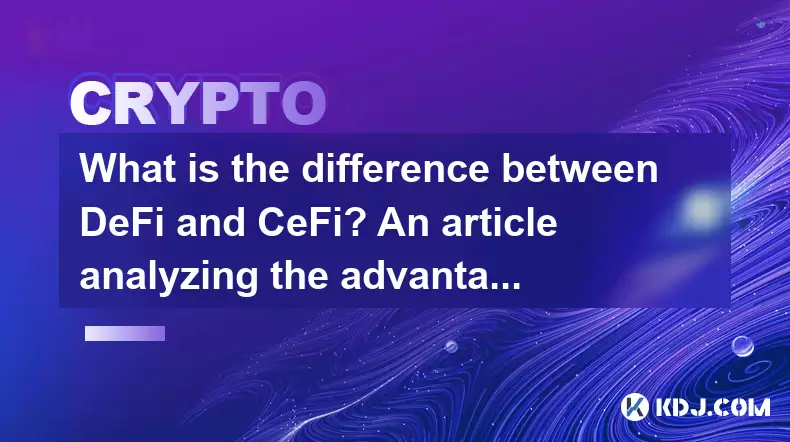
What is the difference between DeFi and CeFi? An article analyzing the advantages and disadvantages of both
Jun 13,2025 at 03:57am
Understanding the Foundations of DeFi and CeFiTo fully grasp the difference between DeFi (Decentralized Finance) and CeFi (Centralized Finance), it’s ...
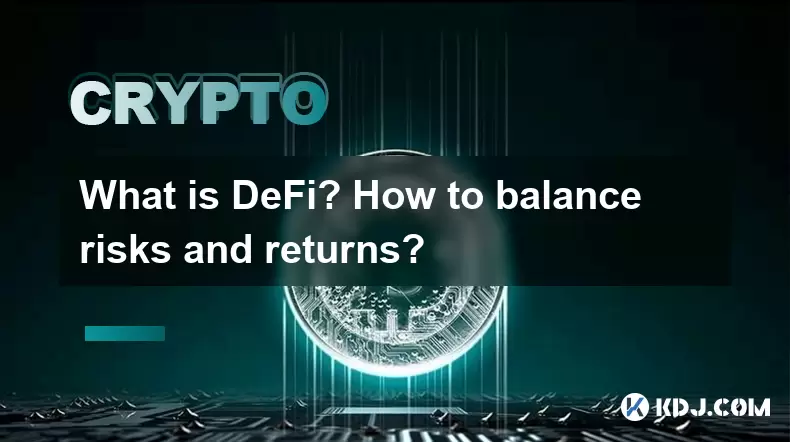
What is DeFi? How to balance risks and returns?
May 31,2025 at 12:22pm
What is DeFi? How to Balance Risks and Returns? Decentralized Finance, commonly known as DeFi, represents a revolutionary shift in the financial ecosy...
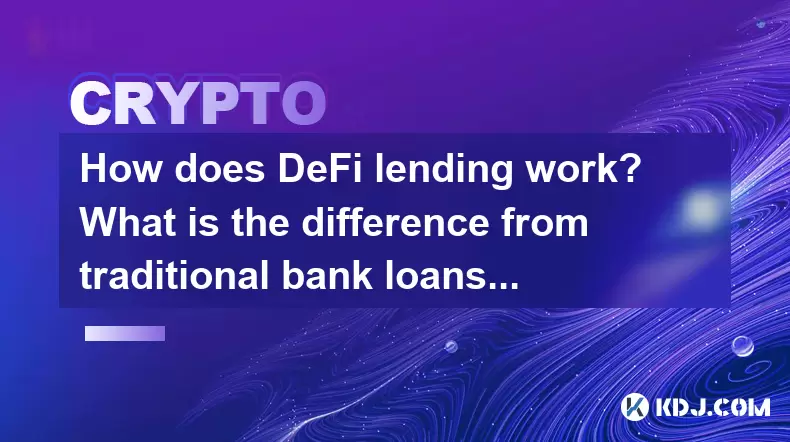
How does DeFi lending work? What is the difference from traditional bank loans?
May 29,2025 at 05:36pm
Introduction to DeFi LendingDeFi lending, or decentralized finance lending, represents a revolutionary shift in the way borrowing and lending are cond...
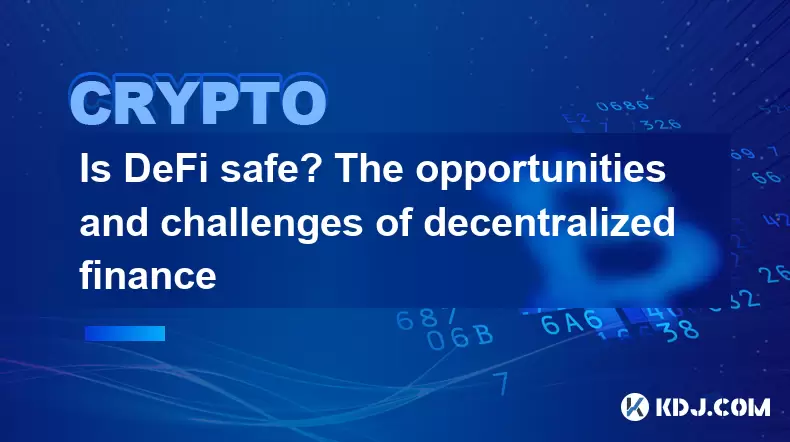
Is DeFi safe? The opportunities and challenges of decentralized finance
May 27,2025 at 02:28pm
Decentralized Finance, commonly known as DeFi, has revolutionized the financial landscape by offering a range of financial services without the need f...
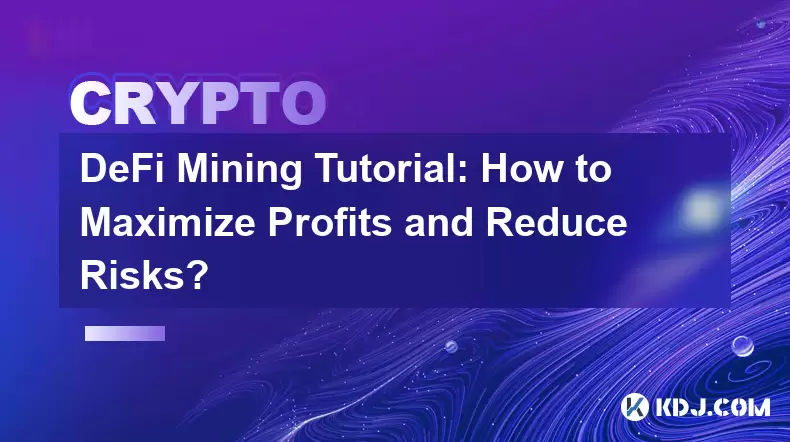
DeFi Mining Tutorial: How to Maximize Profits and Reduce Risks?
May 27,2025 at 07:42am
DeFi, or Decentralized Finance, has opened up a new world of opportunities for crypto enthusiasts looking to maximize their profits through various mi...

How to track DeFi activity on a block explorer
Sep 04,2025 at 05:36pm
Bitcoin's Role in Decentralized Finance1. Bitcoin remains the cornerstone of the cryptocurrency ecosystem, serving as both a store of value and a benc...

What is the difference between DeFi and CeFi? An article analyzing the advantages and disadvantages of both
Jun 13,2025 at 03:57am
Understanding the Foundations of DeFi and CeFiTo fully grasp the difference between DeFi (Decentralized Finance) and CeFi (Centralized Finance), it’s ...

What is DeFi? How to balance risks and returns?
May 31,2025 at 12:22pm
What is DeFi? How to Balance Risks and Returns? Decentralized Finance, commonly known as DeFi, represents a revolutionary shift in the financial ecosy...

How does DeFi lending work? What is the difference from traditional bank loans?
May 29,2025 at 05:36pm
Introduction to DeFi LendingDeFi lending, or decentralized finance lending, represents a revolutionary shift in the way borrowing and lending are cond...

Is DeFi safe? The opportunities and challenges of decentralized finance
May 27,2025 at 02:28pm
Decentralized Finance, commonly known as DeFi, has revolutionized the financial landscape by offering a range of financial services without the need f...

DeFi Mining Tutorial: How to Maximize Profits and Reduce Risks?
May 27,2025 at 07:42am
DeFi, or Decentralized Finance, has opened up a new world of opportunities for crypto enthusiasts looking to maximize their profits through various mi...
See all articles










































































